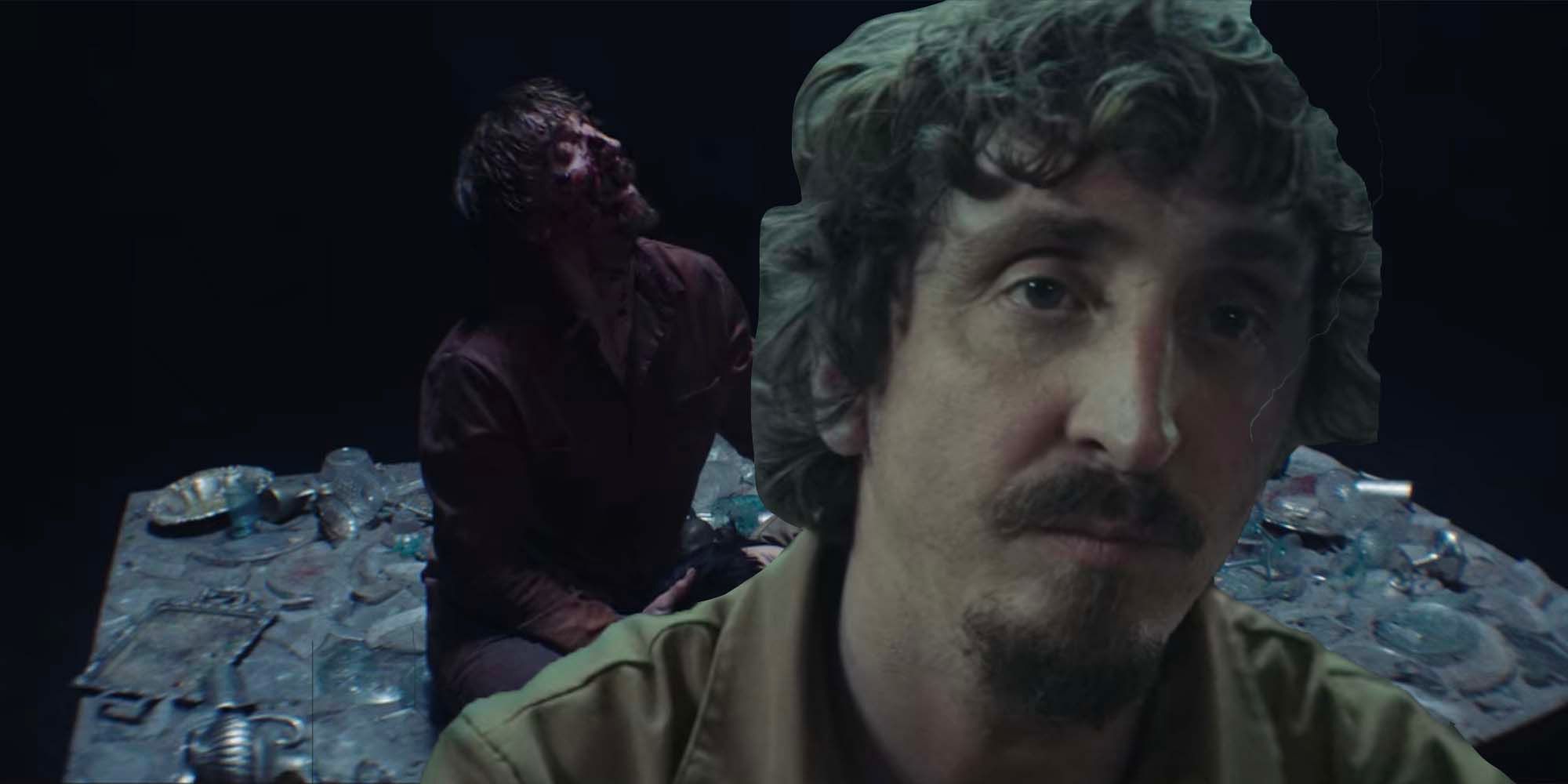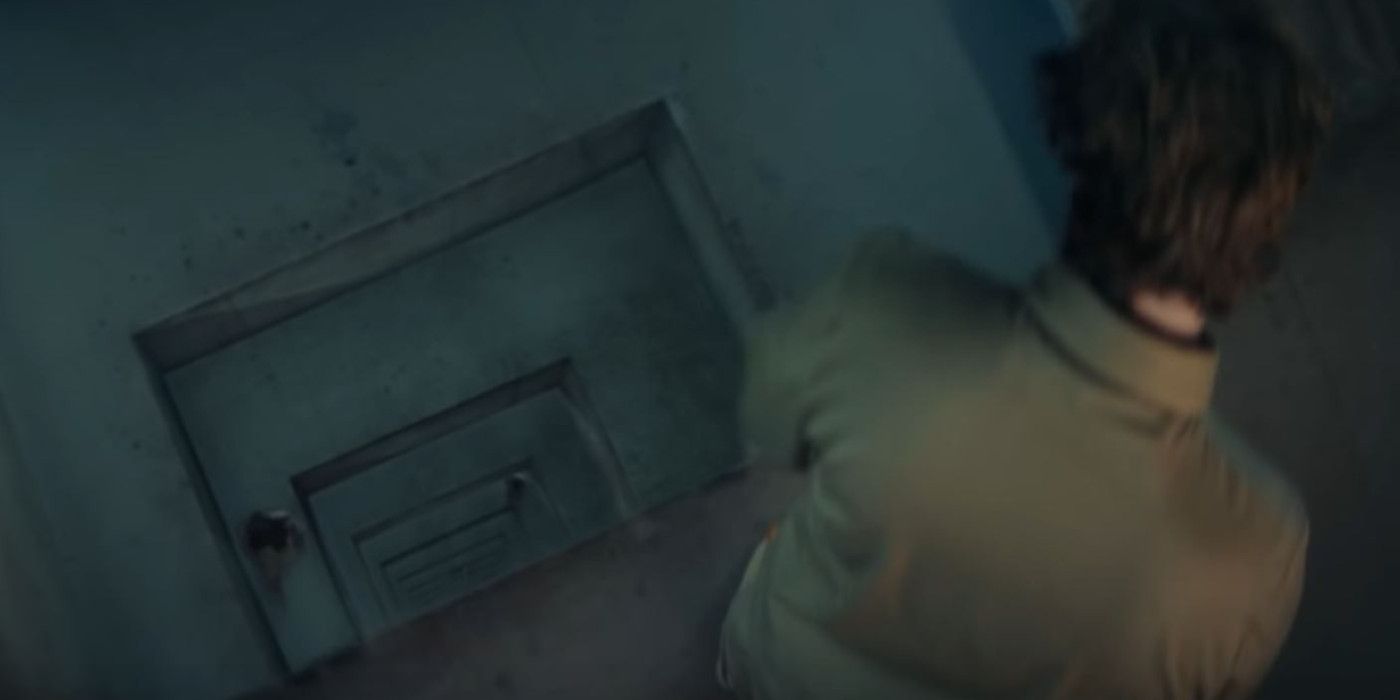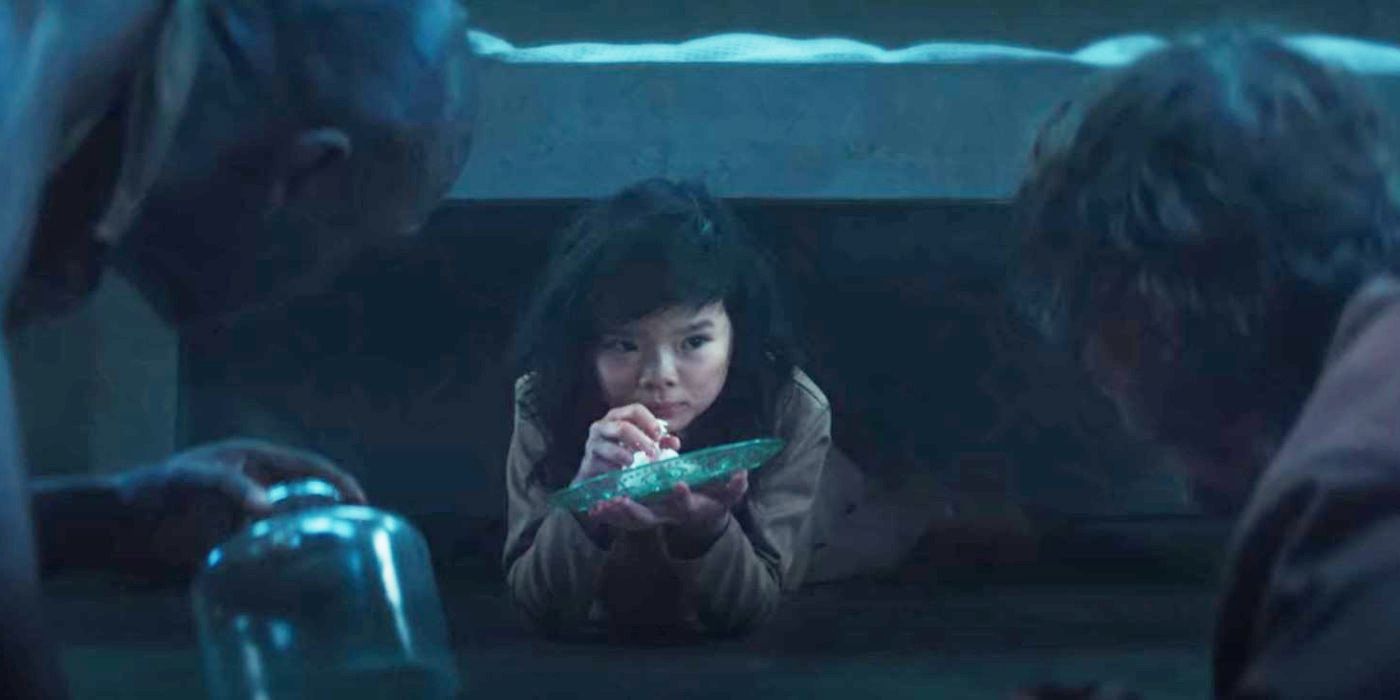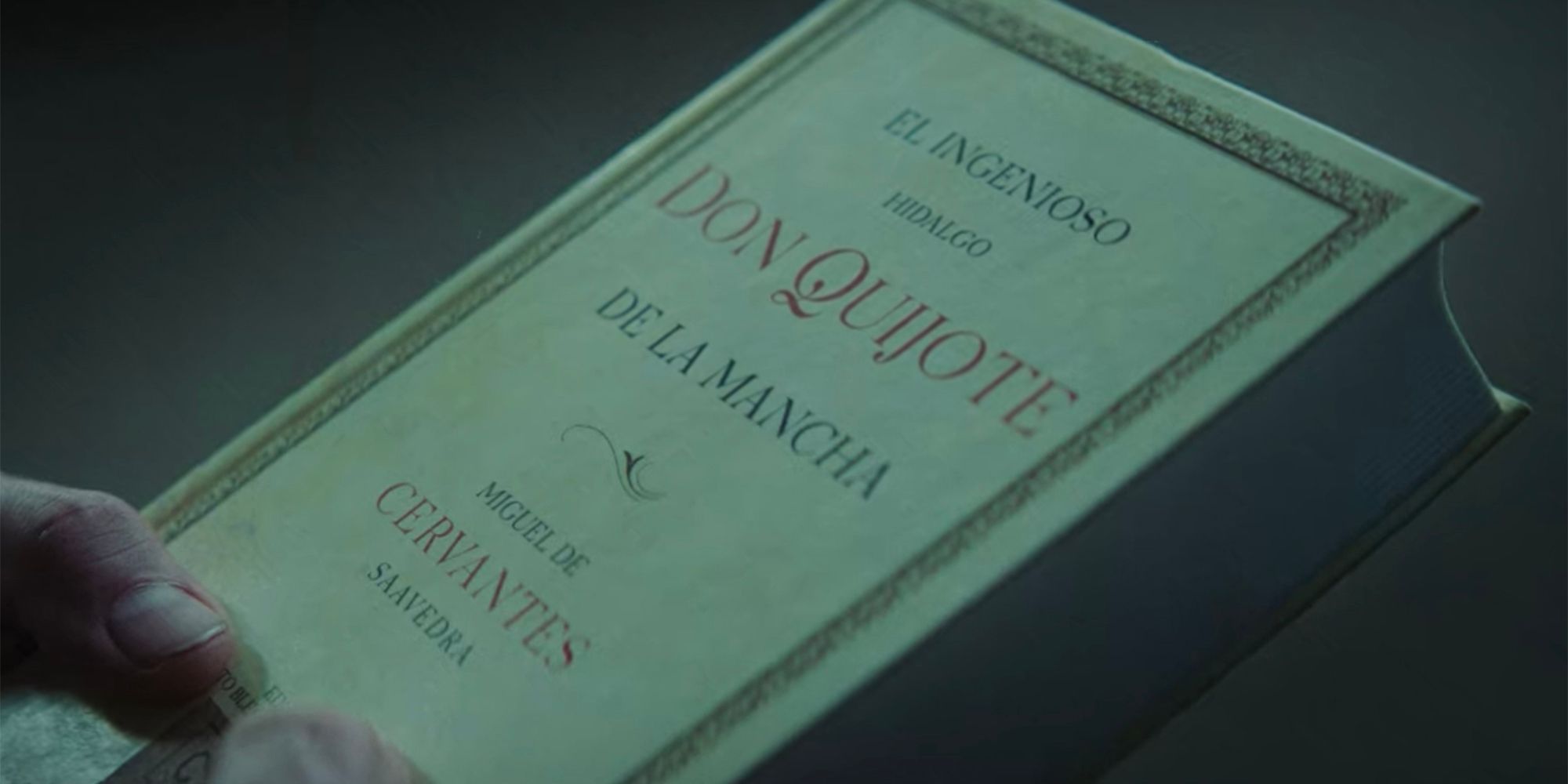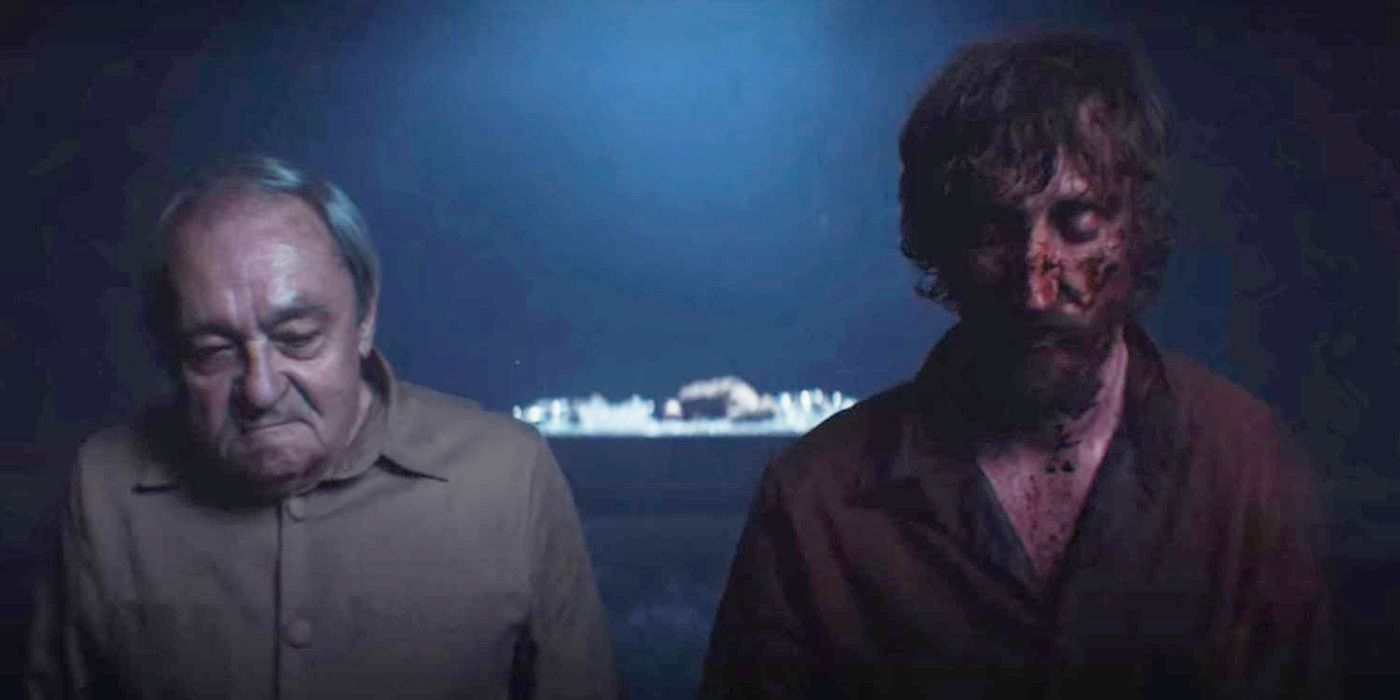The Platform is directed by Galder Gaztelu-Urrutia and explores a tower-style prison wherein the population is fed by a gradually descending platform. Written by David Desola and Pedro Rivero, the latest Netflix Original follows Goreng (Iván Massagué) from his first day in the unique environment, known officially as a Vertical Self-Management Center by the administration but more colloquially referred to as The Pit by the residents. Goreng soon gets the lay of the land from his cell-mate Trimigasi (Zorion Eguileor). With only a hole in the ground denoting anything outside of their concrete bubble, a table of food is lowered down once every 24 hours. Prepared on Level 0, the luxurious food rests at every level for 2 minutes before moving on to the next.
The expectation is simple: if the two residents of every level only ate what they needed, there would be enough for everyone. Unfortunately, greed and gluttony prevail, with those at the top gorging of the offerings, leaving those on lower levels only the scraps or nothing at all. Worse, once a month the inmates are randomly swapped levels, meaning that those from below can rise above and turn the tables on those who previously let them starve. Conversely, those used to thriving together can be forced to turn on each other in mad hunger. While Goreng and Trimigasi bond over meager leftovers on Level 48, things take a drastic turn when their second month together places them farther down on Level 171.
Goreng is revealed to have voluntarily signed up for a stay - trading six months of his life for the reward of an accredited degree and the opportunity to quit smoking. Trimigasi, meanwhile, was forcibly incarcerated for a year after inadvertently killing someone. Also, having survived such lower levels before, Trimigasi reveals that he isn't above further murderous acts and even cannibalism to ensure his own survival. Fortunately for Goreng, he is saved from a truly grim fate by Miharu (Alexandra Masangkay), a mysterious woman for whom Goreng previously showed kindness. The central conflict of The Platform is Goreng's fight to survive and maintain his sanity, all while trying to effect change within the broken system.
The Pit Explained And What It Represents
There are a number of metaphors at work within The Platform. The majority of those revolve around The Pit itself. Primarily, it serves as an indictment against capitalistic hierarchies. Similar to the kinds of caste systems demonstrated by Snowpiercer and The Hunger Games, the status quo offered within The Platform parallels the real world in several thematic ways. While no billionaires exist within The Pit, there are graphically depicted versions of class differences: the rich on the top floors and the poor on the lower levels. And the idea of wealth redistribution is predictably laughed off by those who loom above (even if temporarily). While such terms as "eat the rich" are widely used in real life, Desola and Rivero's script more emphatically explores how the poor are forced - literally and figuratively - to fight and eat each other just to survive. Getting to the rich is a pipe dream unless characters themselves are switched to a higher level.
Unfortunately, as demonstrated by Trimigasi's flagrant disregard for those beneath and petty grievances with those above, living on a higher level of The Pit does not come with a sense of compassion for those on the lower levels. Instead, it usually sparks a selfish sense of privilege and the chance to defecate - literally and figuratively - on those now less fortunate. As Robert Pattinson's character intoned in David Cronenberg's Cosmopolis: "Nobody's against the rich! Everybody's ten seconds from being rich!" While it's a month rather than ten seconds, the mentality of The Pit is similar to that belief. While it's never made clear what the administration's intentions are, it's not hard to imagine that they are attempting to prove such a point.
As frequently espoused by real-world billionaires, if lower-class folks were given the chance, they would be as greedy and corrupt as the upper-class people are perceived. As Goreng later notes via his chosen novel, for example, excessive wealth isn't accumulated through generosity but often at the expense of others. As such, Goreng believes the system overall needs to change. Such themes were recently explored in such films as Parasite, though The Platform takes them to more extreme and grotesque lengths.
Additionally, there is a religious undertone that runs throughout The Platform, and in that sense, Goreng's increasingly harrowing prison takes on a new context. After all, another name for Hell has often been The Pit. With its seemingly endless levels, each more savage and depraved than the last, it's easy to parallel Goreng's journey with that in Dante's Divine Comedy. When meeting Imoguiri (Antonia San Juan), who previously worked for the administration, Goreng believes that there are 200 levels, but by the film's conclusion, 333 levels are revealed, half of 666. And Level 0 can often be seen in almost a heavenly context, with one person overseeing the creation of the food in an almost God-like manner.
Why The Child Was The Message
Goreng's initial attempt at fixing The Pit's broken system is an incremental one alongside Imoguiri. After her repeated failed attempts to convince those on the level below to eat a prepared ration and prepare a set ration for those on the next level, Goreng is forced to step in. Issuing a threat to contaminate the food if they don't listen, Goreng forces the residents of the next level to comply. Unfortunately, as Goreng notes, it does nothing to affect the upper levels - where change really needs to begin - and so does little to overhaul the entire system. The chance for a more dramatic shift comes in the wake of Imoguiri's death. Now sharing a cell with Baharat (Emilio Buale Coka), Goreng realizes that going up (as Baharat tries to with a rope) is not the answer. Instead, he posits that they need to work together, despite their frequent differences, and travel down. Boarding the platform, they endeavor to travel with the food and enforce each level to take only their share. Equally, they make it a mission to wholly preserve one item of food in order for it to be a message to those preparing the meals.
When they finally make it all the way to Level 333, however, Goreng and Baharat are shocked to find a young girl living alone, the child Miharu was looking for all along. Though the administration lied that no one under 16 lived in The Pit, when Goreng meets the child, it is the ultimate confirmation that the system is broken.
The unnamed girl serving Goreng and Baharat's message also works on as many thematic and metaphorical levels as The Pit itself. As a representation of hope for the future and innocence, the child in Level 333 provides the perfect message for those on Level 0 and the administration that something needs to change. Her meager existence juxtaposed with the hope often associated with children hammers home the idea that children are often the most damaged victims of class struggles.
Why Goreng Stays Below (& The Importance Of His Book)
The concept of resigning oneself to their fate relates firmly to Goreng by the end of The Platform. Despite retaining much more humanity than most in The Pit, Goreng has to rely on some extreme methods in order to survive. Not only does he resort to murdering Trimigasi after being rescued by Miharu, but he willingly consumes his flesh in order to sustain himself. Following Imoguiri's suicide, he also eats parts of her in order to get through another month on the lower levels. Equally, he and Baharat no doubt kill a number of people on their journey down through the levels in order to enforce their rationing rules and preserve their message. As a result, it's understandable that he relinquishes his place on the platform and allows the girl to venture back up alone.
After everything he has done, Goreng clearly feels that there is no place for him in the world anymore. Goreng's name actually translates as "to fry." As such, returning to the allegory of The Pit equalling Hell, Goreng opts to remain and "fry" for his sins. His reasons to remain an ingrained part of The Pit also rests in Goreng's chosen reading. Allowed to bring in one item with him, Goreng opted for a copy of Don Quixote by Miguel de Cervantes. Like the book's knight-errant, Goreng serves the community rather than himself.
As much as he'd like to venture up with the girl and thus be the bearer of the message, he knows that there is no need. With his psyche more or less in tatters now, Goreng follows suit with a number of quixotic characters and historical figures - allowing himself to be insulated in history and merely let the message he lived and suffered to put into the world speak for itself. In another religious parallel, Goreng is frequently referred to as a messiah. It's, therefore, a fitting end that he sacrifices himself so that the multitude of sins that The Pit embodies can end.
What The Platform's Ending Really Means
A large part of Goreng's decision to disembark the platform is the apparition of Trimigasi. After killing him, Goreng was repeatedly haunted by his original cellmate, and Goreng frequently found himself haunted by Imoguiri and Baharat after their deaths. These manifest in dreams and in hallucinatory waking visions, and all serve as guides but are also representations of Goreng's increasingly accrued demons. Though he was living through extraordinary circumstances, Goreng feels deserving of his guilt. That's why he chooses to remain on The Pit's lower levels and literally walk with Trimigasi to die in darkness, while the girl symbolically rises up toward the light behind him.
Goreng's actions have afforded him a judgment-free view of everything Trimigasi and others have done. Having done the same himself, Goreng is a representation now of the system he wants to break. He's a symbol of an old way of existing and counter to everything the girl represents. As such, whatever happens next, it's where he knows he belongs. The Platform's concludes tragically but with a decision that is perfectly offset by a sense of hope for the wider world at least.

